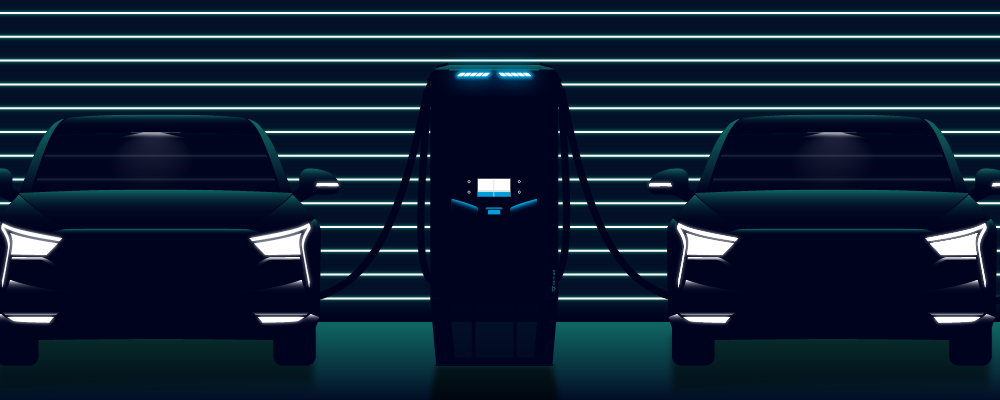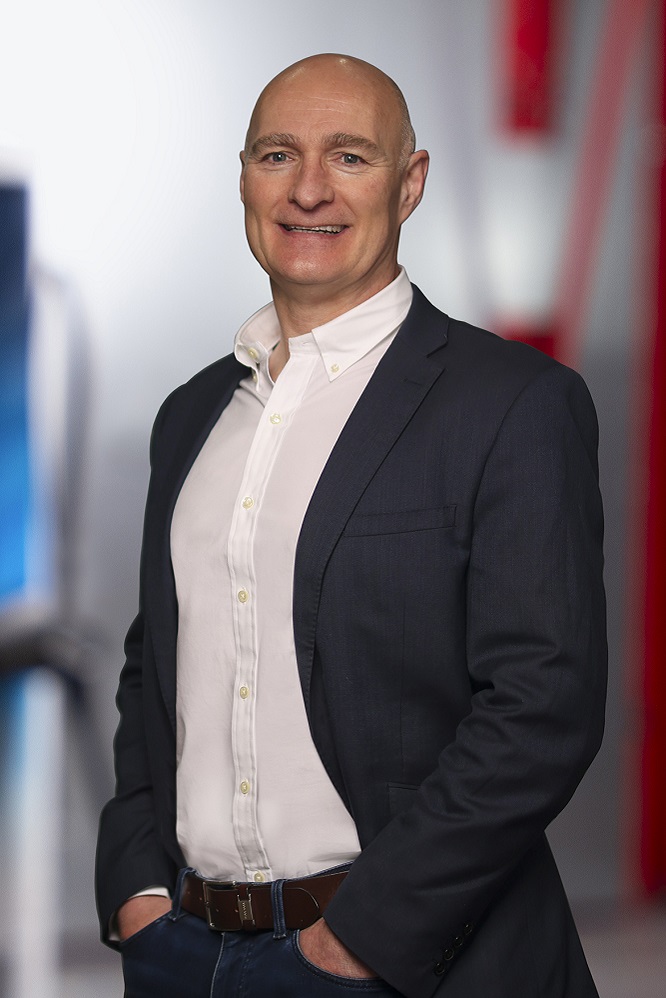Tritium Chief Sales Officer David Nicholl Talks EV Charging with the London EV Show

Tritium’s CSO David Nicholl recently spoke with the organizers of the London EV show about the future of EV charging. This article was published on their website on 31 August 2023.

As the global automotive industry undergoes a profound transformation, the rise of electric vehicles has become a central focus. With the shift towards sustainability and cleaner transportation solutions, the development of fast-charging infrastructure has emerged as an enabler of this transition. To delve into the intricate landscape of EV charging and its role in shaping the industry, we had the privilege of having a Q&A Session with David Nicholl, Chief Sales Officer of Tritium, a leading name in fast-charging technology. Let’s delve into the world of electric vehicle charging with David Nicholl, shedding light on the technologies, strategies, and visions that are driving this transformative journey.
London EV Show: As an experienced global entrepreneurial operations & business transformation executive and chairman, what significant trends have you observed in the electric vehicle market over the past few years that have shaped the industry’s landscape?
David Nicholl: The biggest trend has been a vast investment in DC fast charging across the globe. There are now around 5,000 rapid and ultra-rapid charging points in the UK alone (ZapMap) and the government is making a huge investment to build out charging infrastructure even more.
But we’ll need even more rapid and ultra-rapid chargers if we want to meet driver demands and emissions targets. New EV sales in the UK were up almost 20 percent this year (Society of Motor Manufacturers and Traders). Those drivers want to know that there will be a rapid charging station within easy reach no matter where they are. And the chargers at those stations need to be operational. The UK government recently passed a 99% uptime or reliability standard for rapid and ultra-rapid chargers. That will greatly improve charger availability, but it’s important that operators have robust service level agreements and preventative maintenance contracts in place with charger manufacturers. Preventative maintenance measures must be adhered to, and spare parts should be readily available to maintain uptime.
It’s also important that we have charging infrastructure that can work with a wide variety of utility power levels and different vehicles. Tritium uses dynamic load balancing to make the best use of grid power and to deliver optimal power to EVs that have varying charging speeds. Load balancing lets us distribute power among chargers, delivering the right amount of power at the right time without much waste, and ensuring power capacity is better utilised and assets provide a better return.
LEVS: Could you share some insights into the advancements in fast-charging technology for electric vehicles?
Mr Nicholl: Again, dynamic load balancing is a big advancement in DC charging for EVs. Very basically, it lets charge point operators charge more vehicles at the same time. It knows how much power each EV needs at a given time and only provides what’s needed. It dynamically distributes power to charge multiple EVs very efficiently in increments of just 1kW, saving power and making better use of the available power grid minimising unused capacity. The power grid is a huge issue here in the UK. In many places we simply don’t have robust power feeds that can support multiple rapid or ultra-rapid chargers. Distributed systems like our PKM let charge point operators install rapid chargers even where grid feeds are limited.
Today’s advanced ultra-rapid chargers like our PKM150 are also modular and scalable. That means the power can be upgraded over time, and additional charging stations can be added to meet the future demands of EV drivers. They’re also more reliable and easier to maintain. If a single module in a charger has an issue, the charger can still operate at a lower power output until the module can be investigated by a technician and if needed, replaced in minutes. Serviceability and modularity are key to building reliable charging infrastructure.
Chargers now also include easy payment options and drivers don’t have to download an app or sign up with a charge point operator to charge their cars.
LEVS: How effective is fast-charging in addressing range anxiety and promoting the adoption of electric vehicles?
Mr Nicholl: Fast charging can eliminate range anxiety if it’s widely available. If EV drivers know they’re never more than a few miles (or kilometres) from a rapid charger, range anxiety disappears. That’s why it’s crucial to build vast rapid charging networks across the world.
Availability of fast chargers is also critical to advancing EV adoption. Drivers want to know that they will be able to accessibly recharge an EV when arriving at a charging site without having to wait or think about it, much like the experience ICE vehicle drivers have. By increasing availability, and visibility, to fast chargers, drivers will gain the confidence that they can go whenever, wherever and never be stranded.
Amenities in and around charging stations will also help address range anxiety. If drivers know there’s a coffee shop or even a vending machine nearby, they’re more likely to stop at that station.
Lastly, and most importantly, chargers need to be reliable. Broken or unavailable chargers only erode the public’s confidence in EV charging and EVs.
LEVS: How can fast charging infrastructures be made compatible with various electric vehicle models?
Mr Nicholl: We conduct extensive interoperability testing with EV manufacturers across the globe to ensure that our chargers are compatible with their latest vehicles.
Now most charging infrastructure is largely compatible with most EVs on the market. Across Europe auto manufacturers are all adopting the CCS2 connector standard, while you’re seeing a split between CCS1 and Tesla’s NACS connectors in North America.
Rapid chargers like ours can use any connector. For example, most of our chargers in the UK and Europe have connectors for CCS and CHAdeMO—the Japanese standard. And in North America we’re planning on offering our chargers with CCS and NACS connectors and many Tritium chargers in the US also have CHAdeMO.
Easy payment processing will also help with charger-EV compatibility. In the early days many charge point operators had their own apps or cards, you had to be a member to use their systems. Now many charge point operators are using credit card readers so anyone can use their chargers. All of Tritium’s chargers have the option for contactless credit card readers so anyone can use them without being a member of a charging network.
LEVS: What are the key considerations in developing fast charging infrastructure for heavy machinery and how can it accelerate the adoption of electric vehicles in that sector?
Mr Nicholl: Chargers for heavy machinery see much more abuse than other chargers. They need to be robust and capable of handling that abuse. All our chargers are weather sealed to keep dust and dirt away from sensitive electronic components and undergo robust impact testing to ensure resiliency in the field. They’re also designed to be easily maintained and repaired. Heavy machinery operators should look for chargers that can take a beating and that can be rapidly repaired. They should also have service level agreements, or SLAs, to ensure their chargers can be repaired right away if they’re damaged. I think once heavy commercial operators know they can count on their chargers and their service providers they’ll make the switch. Electric machines are far less complex than their diesel counterparts and they should be much less expensive to operate and maintain. Electric machines make a lot of sense, the charging infrastructure just needs to be there.
LEVS: How can the implementation of fast charging infrastructure support the electrification of vehicle fleets?
Mr Nicholl: Commercial vehicles have much larger battery capacities than passenger vehicles. They need ultra-rapid chargers to charge up in a reasonable amount of time so they can spend more time on the road moving goods and getting work done. From a business perspective, fast charging means you can use your fleet more, and use it more efficiently.
High-power chargers need more power from the grid, which operators will have to consider. Commercial vehicle chargers will also need to be durable because they’ll see more use and abuse.
High-power commercial charging stations are necessary for commercial vehicles, there’s no way around it. They’re crucial to long-distance trucking and other commercial industries. I predict that many commercial vehicle operators will build their own charging infrastructure. We have many commercial vehicle operator customers who install chargers at their depots and offices for their commercial EVs. That lets them take control of their energy or “fuel” costs and achieve greater operational efficiency. They can even offset some of those costs with solar panels, wind turbines, on-site storage, or other forms of clean and renewable energies.
However, the number of chargers and charge locations an EV fleet needs really depends on the size of the fleet, utilisation rates of the fleet, and the dwell or idle times for the vehicles. In some cases, EV commercial fleets may not need ultra-rapid chargers if they can charge up overnight using level 2 AC chargers.
LEVS: How do events like the London EV Show contribute to the advancement and promotion of electric vehicles in the industry?
Mr Nicholl: People love to interact with vehicles and talk to experts. Shows like this can help answer their questions and can inspire them to move away from ICE vehicles.
And business owners need to see how EVs can fit into their organisations, what the advantages are. And there are a lot of advantages. EVs just aren’t cleaner and better for the environment—and let’s be honest mandated in a lot of countries—they’re also cheaper to own and operate. Shows like this can demonstrate the many advantages that EVs have over ICE vehicles and help businesses make the switch.
These shows are also a good way for manufacturers, charge point operators, and businesses to review the latest regulations around EVs and EV charging. The UK is rolling out new regulations and Europe has its own plan for rapid charging in the next five to 10 years. Businesses need to know these regulations so they can future-proof their EV charging investments.